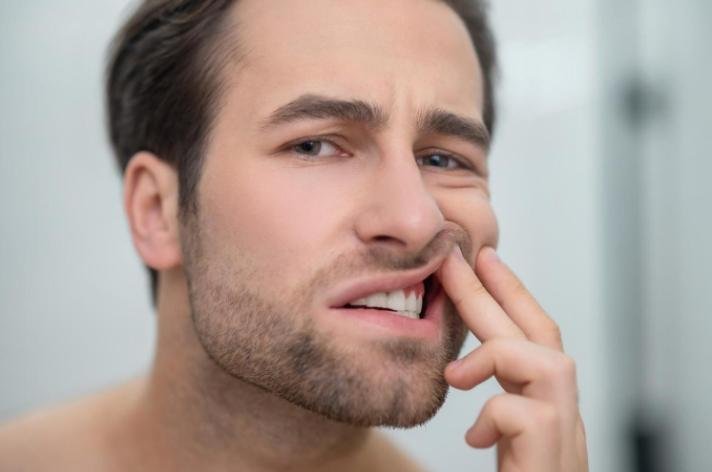Image: https://www.abnewswire.com/upload/2025/10/837bdfc7577b8f18bbd7aee0a44ee5a2.jpg
Receding gums, or gingival recession, is a condition that affects millions of people worldwide, and new dental research is shedding light on how it develops, how it might be reversed, and how future therapies could shift treatment paradigms. As everyday consumers explore options to protect their gum tissue, many consider over-the-counter formulas such as LivFresh [https://getlivfresh.com/blogs/blog/best-toothpaste-for-receding-gums] to address symptoms like sensitivity and inflammation. But the frontier of innovation now reaches far beyond topical products: it’s entering the realm of cell biology, biomaterials, and regenerative medicine.
What Is Gum Recession (and Why It Matters)
Gum recession occurs when gum tissue pulls away from the tooth, exposing the root surface. This process can lead to increased sensitivity, a higher risk of cavity formation on root surfaces, and in advanced cases, loosened teeth or bone loss. According to widely cited estimates, nearly 85 % of people have some degree of recession on one or more teeth.
Receding gums do more than impair oral comfort, growing evidence links periodontal health to systemic conditions. Chronic gum disease (periodontitis) is associated with increased risk for cardiovascular disease, diabetes, and even cognitive decline. A recent review found that people with periodontitis had higher odds of Alzheimer’s disease, underlining how oral inflammation may ripple into broader health impacts.
Because recession is often irreversible, preventing progression and promoting regeneration are key goals. That’s why recent scientific advances are so compelling, they aim not just to arrest damage, but to restore lost tissue.
Regeneration, Growth Factors & Bioactive Therapies
One of the most exciting threads in recent periodontal research is the use of recombinant growth factors to stimulate tissue repair. A 2024 narrative review described how two molecules, recombinant human platelet-derived growth factor BB (rhPDGF-BB) and recombinant human fibroblast growth factor-2 (rhFGF-2), are being used to regenerate alveolar bone, periodontal ligament, and soft tissue in sites affected by gum recession or periodontal defects.
These growth factors act as biological signals, prompting cellular proliferation, migration, and vascularization in damaged tissue zones. When combined with scaffolds and graft materials, they yield improved clinical attachment and deeper defect resolution compared to more traditional surgery alone.
Beyond growth factors, researchers are investigating injectable hydrogels as delivery systems. A recent study published in ACS Applied Materials & Interfaces [https://axial.acs.org/materials-science/smile-new-study-reveals-injectable-hydrogel-dental-treatment] described a hydrogel capable of releasing antimicrobials and promoting bone regeneration. This gel incorporates piezoelectric components that generate low-level electrical charge in response to mechanical stimuli (like chewing), helping to inhibit bacterial growth while encouraging stem cell activity and tissue repair.
In parallel, experimental therapies targeting cellular senescence, the process by which aged or damaged cells stop dividing and secrete inflammatory signals, are showing promise. A translational study from Penn Dental Medicine used a drug combination (dasatinib + quercetin) to reduce senescent cell burden and periodontal inflammation in animal models, preserving dental bone and gum structure.
These approaches reflect a shift: from only removing diseased tissue and grafting, toward biologically guided regeneration.
Minimally Invasive & Digital Diagnostics
Advances in treatment need to be matched by early, precise diagnosis. Two emerging techniques are noteworthy:
*
Quantitative Ultrasound (QUS): Researchers have begun applying ultrasound to distinguish between different oral soft tissues (attached gingiva versus alveolar mucosa) in vivo, using statistical models to correlate ultrasonic signal patterns with tissue structure. Such noninvasive diagnostics may one day enable earlier detection of recession risk.
*
Deep Learning in Radiographic Bone Measurement: A deep neural network model has been developed to analyze radiographs and measure alveolar bone levels, facilitating more objective staging of recession and periodontal disease. In tests, the model’s measurements aligned closely with human examiners.
Integrating such tools into routine dentistry could allow more targeted intervention before extensive gum recession occurs.
What This Means for Patients & Clinicians
While these scientific advances are promising, many remain in early stages or animal models. But they point toward a future where gum recession is addressed not only by mechanical grafting, but by regenerative biology and smart diagnostics.
For now, clinicians can consider the following evidence-based strategies:
*
Use growth factor-augmented grafts in suitable cases, especially when recession is moderate and patient healing capacity is strong.
*
Consider adjunctive therapies, such as low-level laser therapy or novel biomaterials, to enhance healing response.
*
Adopt diagnostic aids like ultrasound or AI-based imaging to identify early tissue changes.
*
Focus on prevention: avoid aggressive brushing, maintain meticulous plaque control, manage systemic risk factors (e.g. diabetes, smoking), and schedule routine check-ups.
Meanwhile, patients should understand that over-the-counter products like LivFresh may support symptom relief or mild inflammation control, but they are unlikely to reverse significant tissue loss on their own. They may serve best as complementary measures alongside professional care.
The Road Ahead
The current trajectory of research suggests that in the coming decade, treatments for receding gums may be as much about engineering biology as about mechanical reconstruction. Therapies combining growth factors, stem cells, hydrogels, and senotherapies lie on the horizon. Meanwhile, diagnostic tools will become sharper, enabling earlier and more personalized intervention.
For now, the message is clear: receding gums are not merely a cosmetic issue, they are a window into broader tissue health. As research advances, they may also become one of the first areas where regenerative medicine truly touches everyday dental care.
Media Contact
Company Name: LIVFRESH
Contact Person: Amit Goswamy
Email:Send Email [https://www.abnewswire.com/email_contact_us.php?pr=livfresh-the-science-behind-receding-gums-and-new-dental-research-findings]
Country: United States
Website: http://getlivfresh.com
Legal Disclaimer: Information contained on this page is provided by an independent third-party content provider. ABNewswire makes no warranties or responsibility or liability for the accuracy, content, images, videos, licenses, completeness, legality, or reliability of the information contained in this article. If you are affiliated with this article or have any complaints or copyright issues related to this article and would like it to be removed, please contact retract@swscontact.com
This release was published on openPR.


















